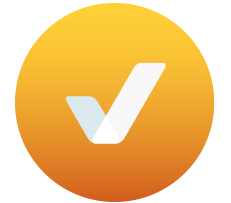Florida Power & Light’s Half-Baked Solar Program Moves Forward
Florida PSC approves voluntary solar proposal, calls for stakeholder involvement after FPL admits it has no goals for program.
The Florida Public Service Commission cautiously approved Florida Power & Light’s proposed Voluntary Solar Partnership Program on August 12, following some remarkably, shall we say – candid – comments during the public meeting. So candid, in fact, that we felt it is worth sharing the highlights:
Commissioner Edgar: “Do you have a goal?”
FPL: “We do not have an ultimate goal.”
Commissioner Edgar: “Is this program cost-effective?”
FPL: “I’m not exactly sure what the definition of cost-effective refers to.”
Watch for yourself here:
It’s hard not to laugh and let FPL choose lifeline or phone a friend. But folks, this is serious business. Florida’s largest investor-owned utility, with its army of attorneys, engineers, financial analysts, and lobbyists, could not answer simple questions about its flagship new solar program. These are people on whom we rely to act in the public’s best interests. People the Commissioners look to for technical expertise. In that light, Tuesday’s showing is suddenly not so funny.
FPL voluntary solar proposal falls short of best practices
Some background: FPL proposed the “community based” voluntary solar program back in April as a replacement to rooftop solar incentives. The proposal quickly gained the wrong kind of traction among industry stakeholders and customers. The gist of FPL’s proposal: Customers should voluntarily pay an extra $9/month to support local solar projects.
Let’s be clear – we’re all for utilities taking the initiative to bring their customers the clean energy they want. And we love community shared solar, a model in which customers who might not be able to put solar on their own property can share the output of a solar project located elsewhere in their community. But FPL’s proposal is, to put it nicely, lacking.
For contrast, FPL’s investor-owned utility peers at Tucson Electric Power offer their customers energy from community solar projects at a fixed rate for 20 years. Which makes sense, because the fuel is free–that’s one of the main benefits of renewable power. While TEP’s customers pay a slight premium for the solar energy in the early years, the expectation is that they will save money over time as standard rates increase.
And at Orlando Utilities Commission, which pioneered community solar in Florida, it works the same way: higher rate up front, but participating customers get to lock it in for 25 years. Now, we could argue that there should not even be an initial premium for the solar, but the point is that these utilities are at least making a straight-faced effort to offer their customers the bill-saving benefits of going solar. OUC customers agree — the program sold out in under a week.
Advocates recommend solar program improvements
The Southern Alliance for Clean Energy and Vote Solar filed comments in July expanding on the public’s demand for a scalable solution to solar energy for the masses. And Vote Solar’s Justin Hoysradt was on hand at Tuesday’s meeting to offer some national context on community solar programs, and request that the Commission direct FPL to consult with stakeholders to ensure that their program would actually benefit customers. After FPL staff could not answer questions on the program’s goals, justification, or cost-effectiveness, Commissioner Brisé did just that – suggesting that the utility work with stakeholders to improve program design.
We look forward to that stakeholder engagement, and to seeing FPL deliver on its much-advertised commitment to bring more clean energy to its customers in the Sunshine State.

